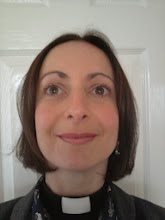To see the article in full go to Church Times May issue
The Church of England’s model of holding together within one Church people who differed profoundly on a major theologicalissue was “not something lightly to be set aside”.
Solutions that involve taking out particular parishes and clergy from the jurisdiction of a bishop and his or her diocese range from the creation of an additional province — a “maximalist approach” — to a new superstructure based on the diocese in Europe, and a religious society or peculiar-jurisdiction model. There is little enthusiasm for these, but the creation of new dioceses, one within the province of York and two within Canterbury, is viewed as a structural solution involving the least innovation.
Bishops for these special dioceses would have the same functions and duties as those of historic dioceses. Ministry would be restricted to male bishops who did not ordain or consecrate women and to male priests ordained by male bishops. The bishops would be ex-officio members of the House ofBishops. The new dioceses would have their own financial and administrative powers and responsibilities.
Such a solution would provide “space and reassurance” for those unable to receive women’s ordained ministry. The Synod would have to judge whether the impact on dioceses’ present geographical integrity was a price worth paying, the report says.
It says: “Someone has likened the outcome as something akin to a ‘Gruyère cheese’. Each of the traditional dioceses would have a number of ‘holes’ left by those parishes that had left to join other parishes some tens or indeed hundreds of miles away to form the new special dioceses.” The report also identifies complications arising from the different concerns of Catholics and Evangelicals.
Four possible sets of arrangements using existing structures are carefully explored, with the caveat: “It is a traditional Church of England reflex to look for the middle ground.”
Variation one is for the Bishops to provide a statutory code of practice for oversight by “complementary bishops”. Their powers would be delegated by the diocesan bishop. Part II of the 1993 Measure, giving parishes a statutory right not to have a female celebrant or female incumbent, would be repealed. Variation two would retain that part of the Measure, so that that the code of practice would govern only the new provisions relating to women bishops.
The legislation of variation three would make delegation to a complementary bishop mandatory. The fourth variation would transfer rather than delegate oversight: “material difference for those who, while they acknowledged [the diocesan bishop’s] legal authority, nevertheless had conscientious difficulties over accepting his or her headship, or seeing themselves as part of the college of presbyters over which he or she presided”.
Under all of the variations, the parish and its priest would remain within their existing diocese. “The diocesan bishop would continue to exercise those powers not passed to the complementary bishop and would, in particular, retain responsibility for pastoral reorganisation throughout the diocese, though with an obligation to consult the complementary bishop. The latter would in each case be a male bishop.”
Clear advice has judged the legal significance of Canon A4, the interpretation of which has been hotly debated at Synod, to be essentially historical, the report declares. “It does not have the effect of requiring general recognition or acceptance of the validity of all clergy ordained within the Church of England.” The report identifies the crux of the dilemma for many supporters of women’s ordination to be whether any special arrangements would be tantamount to acknowledging doubt on the part of the Church of England over the decision to ordain women as priests and bishops.
Crucially, any possible solution needed therefore to incorporate “a clear statement by the Church of England that, in admitting women into the episcopate, it is now fully committed to opening all orders of ministry to men and women”.
A new Canon A4, designed to “meet the needs of the 21st century rather than those of 400 years ago”, should be produced, making it “unambiguously clear that the Church of England’s willingness to provide space for those who cannot in conscience receive the ministry of women bishops and priests does not in any way call into question the Church of England’s recognition of and commitment to the orders of all bishops, priests and deacons ordained according to its rites.”



No comments:
Post a Comment